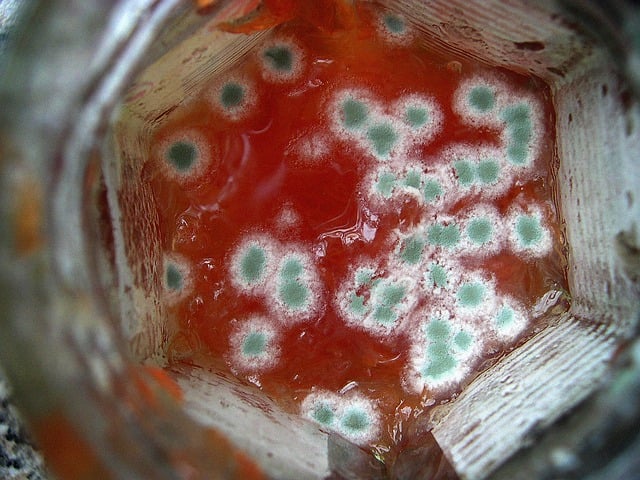
The most infamous toxic mold, stachybotrys atra, is actually quite rare, so it is unlikely that you have it, but there are plenty of other more common molds that can make people ill. And any mold can certainly be fatal to your shoes, clothing, etc!
Molds are always present in our environment, but they can become a problem in any structure if excessive water or moisture problems are not appropriately and quickly addressed. Thus, your first step should be to inform your landlord about this. Left unattended, mold can rot lumber, drywall and other building materials so it behooves you to find out if there is mold in the house, and if so to remedy the situation to avoid increasingly more costly property damage.
Also, if you believe you are experiencing mold-related health problems, you should consult your doctor to rule out other possible causes for your symptoms. If he/she determines that your health problems do stem from mold, a written physician’s report may help encourage your landlord to take steps to hire the appropriate professionals to properly rectify the problem.
Mold Growth
Molds can grow from moisture trapped inside a structure due to inadequate ventilation (a common occurrence in modern air-tight, energy-conserving construction); from a leak from a broken pipe, roof, window or wall; or water seepage from alongside or under the dwelling, which is a landscaping/drainage problem. Perhaps the original leak was already repaired months ago but undetected water flowed to a sealed cavity in another part of the house and it taken this long to grow in a closed, dark, damp environment.
The public has become increasingly aware of the health risks associated with molds. Certain sensitive people, including the elderly, young children and those with respiratory ailments, often suffer adverse affects from prolonged exposure to or increased levels of molds. Common symptoms include eye, nose and throat irritation, excessive colds, nausea, compromised immune systems and respiratory complications such as lung infections or asthma. However, completely healthy individuals with no history of allergies can also react to amplified levels of molds.
Mold Types
There are so very many types of molds in our environment and they are so small that visual detection may not be possible until damage has progressed to an advanced stage. Thus the first step to remedy a mold problem is to hire a certified Industrial Hygienists (IH) from an environmental testing service to take samples and analyze the results in a lab to identify all the specific molds present.
If testing reveals elevated levels of molds, the IH will write a remediation protocol for restoration contractors to follow. Remediation could be as simple as HEPA vacuuming, washing/cleaning of the area with a biocide or diluted (10%) bleach solution, thorough drying, and encapsulation or painting. More involved remediation can require vacating the premises while the work is performed. In these cases, full containment combined with negative air pressure techniques would be used in conjunction with many other steps.
Ready to start your mold removal?
Find ProsMold Testing
Finally, the IH will perform clearance testing to ensure that levels of molds inside the structure are lower than those outside. It is important to note that all the remediation work will be for naught if the original source of the water or moisture intrusion is not permanently rectified.
Unfortunately, just testing for molds can cost hundreds of dollars and there are no governmental agencies to oversee or require testing, abatement or remediation of molds in structures. If your landlord will not address the problem, your only recourse may be to move out. For other remedies you might consult your attorney.
If you decide to move out, avoid bringing your problems along through cross contamination. Many molds can lie dormant indefinitely, only to be reactivated by contact with moisture. Often it is not even the mold that causes problems, but rather their spores, which can become air-borne and inhaled, ingested, or transferred to other areas or objects through the heating and air system or improper handling/cleaning. Therefore, be sure to have all your belongings professionally cleaned before using them again or moving them to a new location.
 Lead Paint Common Sense
Lead Paint Common Sense  How Do I Get Rid of the Moldy Odor in My Basement?
How Do I Get Rid of the Moldy Odor in My Basement?  Chimney Bombs
Chimney Bombs  Guide to Room-by-Room Repairs for Easy Accessibility for Disabled Loved Ones
Guide to Room-by-Room Repairs for Easy Accessibility for Disabled Loved Ones  Pool Safety Guide for Homeowners
Pool Safety Guide for Homeowners 

Are You Familiar With This Topic? Share Your Experience.